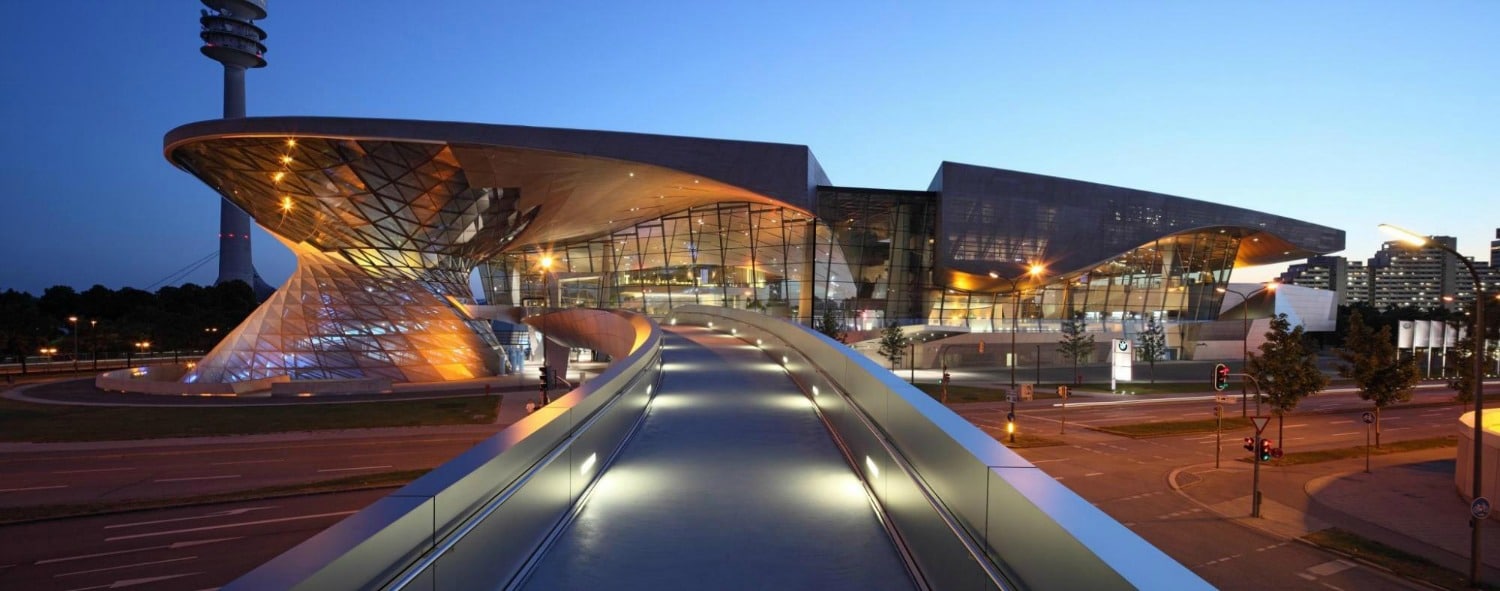Founded in 1158, Munich has been the capital of Bavaria since 1506 and therefore boasts of grandiose palaces and royal heritage. The city is impossibly energetic and it’s easy to see why it is southern Germany’s most popular destination. Beer mugs and high-tech cars, contemporary art museums and dirndls – Munich is a place where the traditional and the modern sit side by side like few others in the world. Plus, it‘s the gateway to the Bavarian Alps with snow-dusted mountains, crystal clear lakes and Germany’s most famous castle, Neuschwanstein, less than two hours’ drive away.
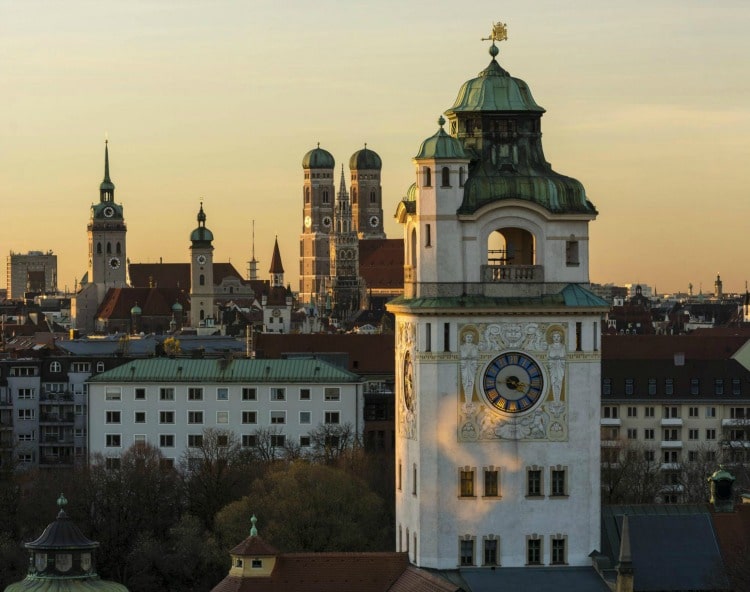
History and Culture
Centuries of holding court have put a mark on Munich and the palace of the Wittelsbach dynasty (13th to early 20th century), the Residenz, and the family‘s summer residence, Schloss Nymphenburg, speak volumes about the city’s role as the center of power and focus of life for the Bavarian rulers. Guests from all over the world come to admire the royal townscape marked by splendid buildings, stately boulevards, and numerous parks.
Today, Munich is a major cultural hub in Europe with three world-class orchestras, huge music festivals, outstanding opera and concert venues and a club scene which reflects the wide array of musical genres on offer, ranging from classical and jazz, to rock, pop and avant-garde.
Especially famous are the art museums in the Bavarian capital, from the modern art Museum Brandhorst to the three Pinakotheks and the Lenbachhaus gallery. The Staatliche Museum Ägyptischer Kunst (State Museum of Egyptian Art) opened its doors to visitors in 2013 while the Documentation Centre for the History of National Socialism followed in 2015.
Visitors looking for a hands-on experience of the past and future of technology should visit the Deutsches Museum and its two separate branches in the city, the Verkehrszentrum (Transport Centre) at Theresienhöhe and Flugwerft Schleissheim aviation museum in northern Munich.
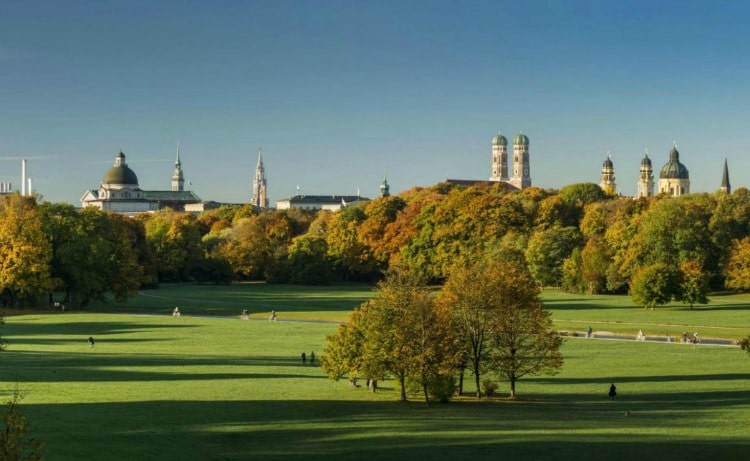
Green Spaces and Gardens
Munich’s parks and gardens present a triad of history, culture, and nature. The sprawling English Garden is among the world’s biggest city parks, larger than London’s Hyde Park or New York’s Central Park. The quiet and idyllic northern part with its vast meadows is the ideal destination for those in search of rest and relaxation while the southern section is somewhat livelier, for example at the Eisbach where river surfers ride the standing wave or on the meadow beneath the Greek temple Monopteros.
The New Botanical Garden is connected seamlessly from the north side of the Nymphenburg palace park and ranks among one of the most important gardens in Europe. Over a century old, it features some 14,000 plant species and a Victorian-style glass palm house with a unique collection of tropical and subtropical plants.
Especially in the summer months, Olympia Park becomes a popular destination when it stages open-air concerts. Built in 1972 for the Munich Olympic Games, the park has two famous eye-catchers: the 951 ft Olympiaturm (tower) and the warped Olympiastadion. There are plenty more green spaces all around the city like the Isar River floodplains or the Westpark with its Japanese gardens.

Beer and Beyond
Beer has been a part of life in Munich for at least seven centuries and its brewing tradition is very much alive today. There were originally almost 70 breweries in the city, of which six major companies are still pumping out world-class suds to hundreds of beer gardens and beer halls. The “beer calendar” shapes the whole year in the Bavarian capital, commencing in March with Starkbierzeit (strong beer season), followed by drinking Maibock in May. The beer season then continues into summer when locals and visitors alike head outside into the many beer gardens. The grand finale is, of course, the world’s largest public festival, the Oktoberfest, which attracts more than six million visitors annually.
But beer alone is only half a meal and it probably comes as no surprise that traditional Bavarian cuisine is a hearty and robust affair. Schweinebraten (roast pork), often served with dark beer sauce, potato dumplings and cabbage salad is a stalwart on the menus in practically every Munich tavern. Another staple food is Weisswurst (a special veal sausage), recommended as a late breakfast with sweet mustard, a pretzel, and a wheat beer.
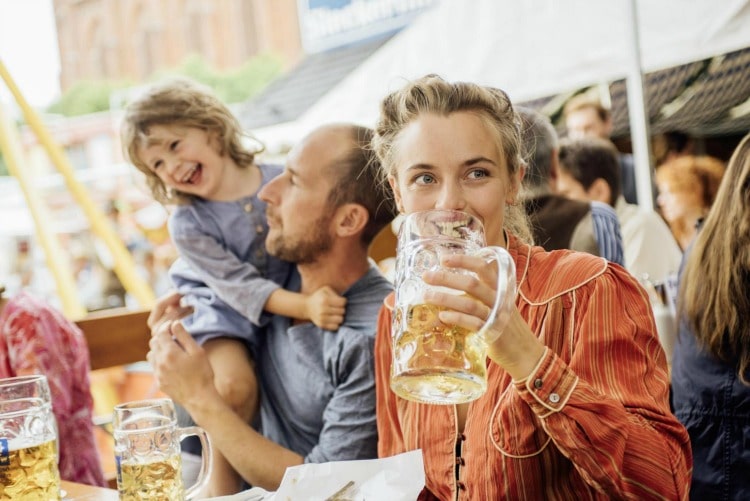
BMW
The history of BMW (Bayerische Motoren Werke in German, or Bavarian Motor Works in English) begins over 100 years ago with its foundation in 1916. The company‘s headquarters are in Munich and the plant there, one of several in the region and even more throughout the world, employs thousands of people. Combined with the workforces of BMW’s various suppliers close by, it’s fair to say that the motoring giant is responsible for a lot of Munich’s wealth. The BMW compound covers a vast area close to the Olympia Park and is split into three parts which are open to visitors.
BMW Welt
The most modern building of the complex, characterized as a tornado and a floating cloud, is BMW Welt, a multi-use exhibition center used for meetings and promotional events, and where buyers can receive delivery of the BMW vehicles they have purchased. Apart from its role as a prestigious car pick-up center, BMW Welt acts as a shop window for the car manufacturer‘s latest models and a show space for the company as a whole. Since opening in October 2007, it has set new visitor records year after year and won numerous awards for its architecture. Furthermore, the EssZimmer on the third floor of BMW Welt draws culinary gourmets from near and far. In 2014, the restaurant received its second Michelin star for its innovative menu founded on classic French cuisine with Mediterranean and regional influences.
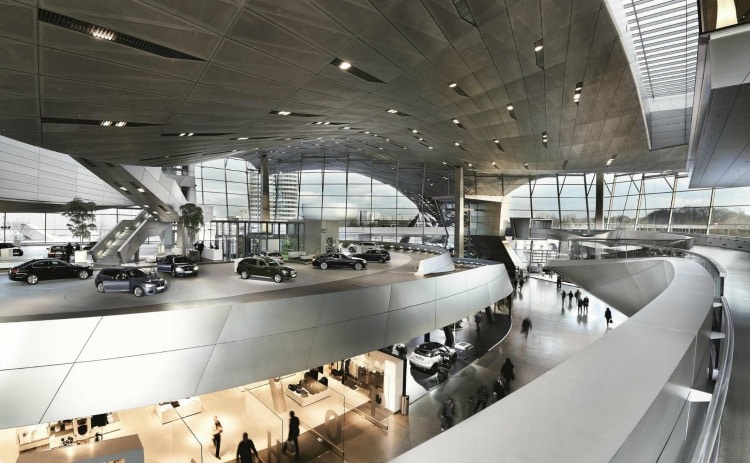
BMW Museum
The museum is one of Germany’s oldest automobile museums and typical BMW – modern, elegant, and well presented. It was built right next door to the heart of the company, the BMW “Four-Cylinder” Building, in 1973. In 2008, the museum, a silver, bowl-shaped building, was redesigned and expanded in size. Today, it showcases important milestones from the company’s more than 100-year history in seven themed houses. Around 120 BMW cars are on display including iconic models such as an M1, the small Isetta, M5 models, and beautiful design studies. The museum also covers the theme of mobility, with a focus on young visitors. The Junior Museum offers a special program with a “learning through play” concept. The next generation can fancy themselves car engineers and even get to design their own vehicle in workshops.
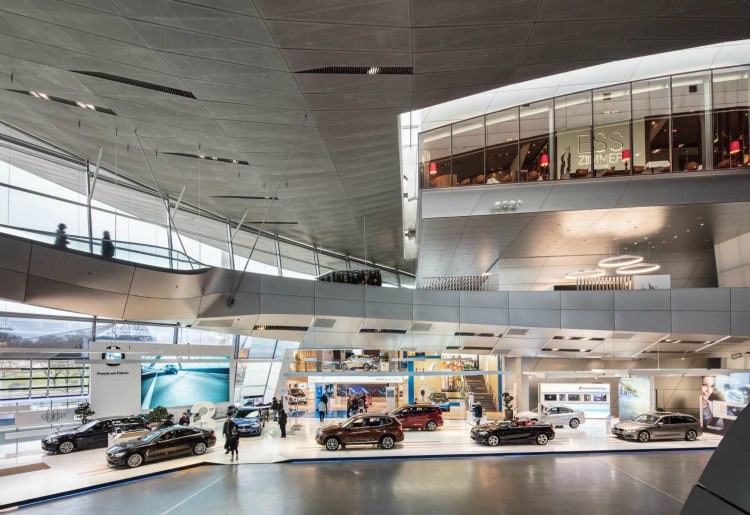
BMW Plant
While much of what is on display at the museum will appeal mostly to fans of BMW and car lovers in general, the BMW Plant* is fascinating for anyone interested in how things are made. A new BMW rolls off the line at a rate of one every 90 seconds. Each car is made to order, based on exact customer requirements (e.g. color, furnishings, in-built technology), with each option and extra different to the next which means that no two cars are the same. Watching the precision robots and their human handlers go through the thousands of steps from sheet metal to an engine running on a rolling road car is an experience well worth having.
*Bookings for a tour of the factory need to be made in advance.
[alert type=white]
Find Out More: www.bavaria.by
Also:
[/alert]

